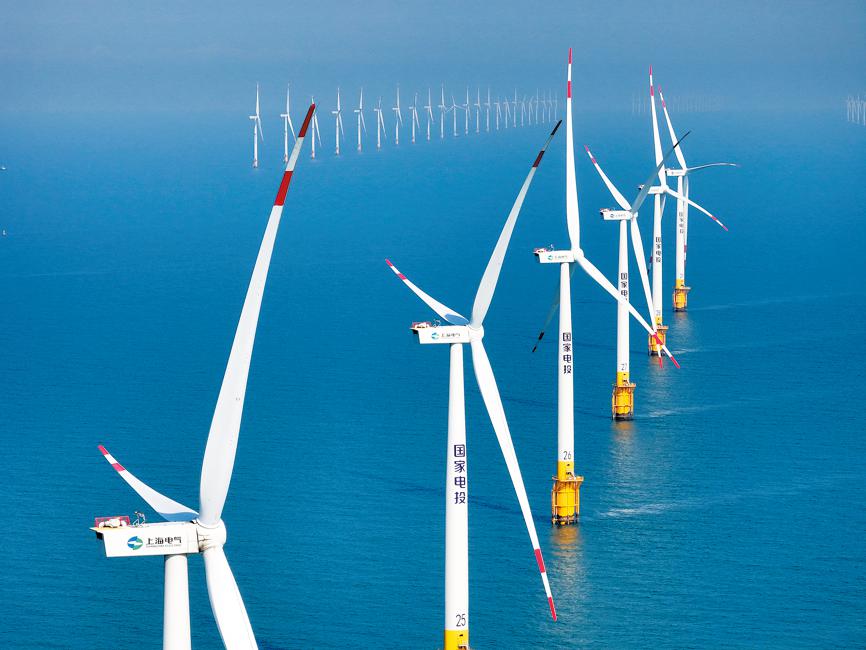Nation powering ahead on renewables

A view of a wind farm off the coast of Rudong county, Jiangsu Province. XU CONGJUN/FOR CHINA DAILY
China's installed renewable energy capacity exceeded 50 percent of its total installed power generation capacity this year, marking the early completion of a government target, in which renewable capacity was planned to exceed that of fossil fuel by 2025, said analysts.
According to the National Energy Administration, the installed capacity of renewable energy has so far exceeded that of thermal power, reaching more than 1.45 billion kilowatts. Solar and wind power meanwhile play a major role, with installed capacity exceeding 1 billion kW.
China has been actively stepping up efforts to build its renewable energy power base in the country's Gobi Desert and other arid regions this year, taking advantage of the abundant wind and solar resources while ensuring a sufficient green power supply in the country's load center in eastern areas.
By the end of November, the first batch of projects had been completed and connected to the grid, with a total capacity of 45.16 million kW. The second and third batches, totaling over 50 million kW, have been approved and some are currently under construction, it said.
Lin Boqiang, head of the China Institute for Studies in Energy Policy at Xiamen University, said that China's advances in scaling up its renewable energy capacity and reducing reliance on traditional fossil fuels position the country as a global leader in renewable energy deployment.
"However, consumption of renewable energy in China still has substantial potential, as it only accounts for a small part of power consumption," Lin said.
Power generated from wind and solar sources now accounts for more than 15 percent of China's total electricity consumption, up from 13.8 percent last year, said the NEA.
Kou Nannan, head of China Research at BloombergNEF, said that most sources of new energy are intermittent and have rapid and random variables, making it difficult to maintain stable and steady power generation and posing a threat to the steady operation of the power grid.
Policy support, power market reform, investment in infrastructure such as upgrading and expansion of the power grid, as well as the development of energy storage, will play key roles in accelerating China's green and low-carbon energy transformation in the years to come, he said.
In recent years, China has been accelerating the development of new energy storage, which can help store excess energy generated by renewable sources for use during periods of low generation, to facilitate the nation's development of renewable energy.
The NEA said that over 24 million kW of new energy storage projects have been completed and become operational this year.
China has also been stepping up energy security with a steadily increasing energy supply this year. The annual addition of power generation capacity was approximately 330 million kW, reaching a total installed capacity of 2.9 billion kW, a year-on-year growth of 12.9 percent, it said.
The administration has pledged to further enhance energy supply guarantee capabilities in the next year, focusing on maintaining crude oil production at a stable level of over 200 million metric tons and sustaining positive momentum in domestic natural gas production.
Annual crude oil production remains stable at over 200 million tons this year, and natural gas production exceeded 230 billion cubic meters, with a year-on-year growth of over 4.5 percent, the NEA said.
Photos
Related Stories
- China backs G20 goal to triple global renewable energy by 2030
- COP28 enhances international collaboration, seeks green development
- Power firms help keep homes toasty
- China's energy output maintains steady growth
- With dual carbon goal and its own pace, China moving toward green transition
- AI Vibes | A Decade of China: Leapfrog development in energy and transportation sectors
Copyright © 2023 People's Daily Online. All Rights Reserved.









